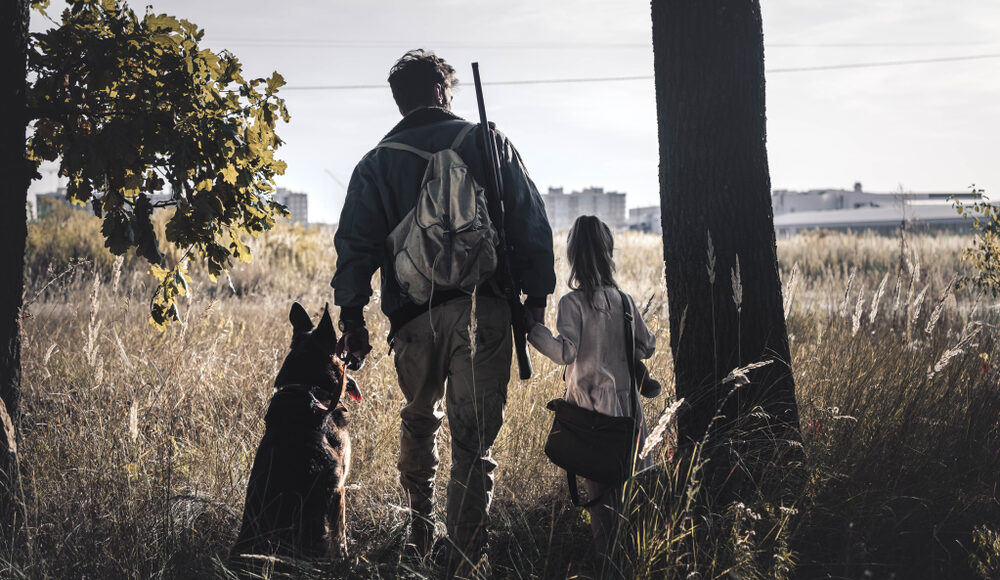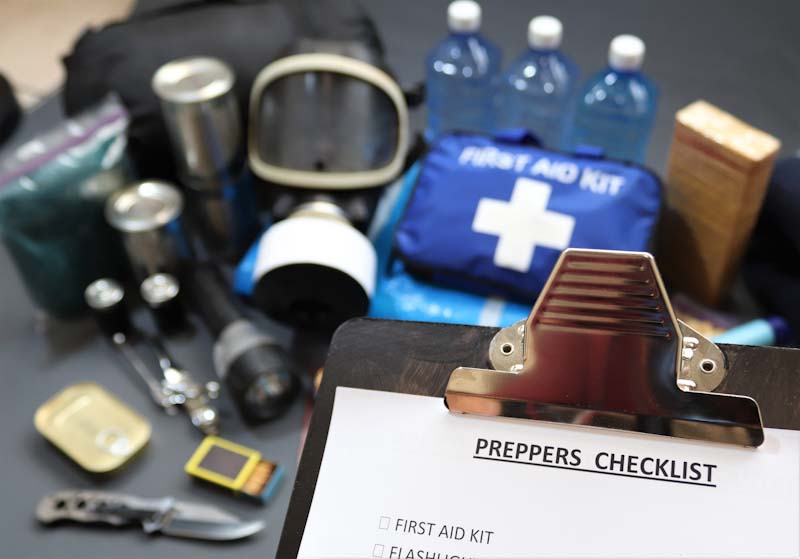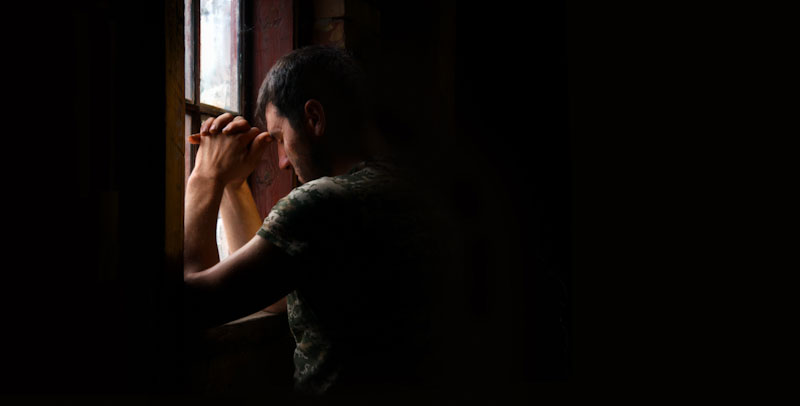No matter how much any of us stockpile, there’s a finite limit to our supplies. That means that while those supplies are intended to get us through a disaster and its aftermath, there’s a limit to how long they can do that. Before they run out, we’re either going to have to be growing our own food and producing everything we need, or we’re going to have to find it somewhere. That will be a challenge, considering that others will be scavenging for supplies long before we are.
But that doesn’t mean those people will find everything. Nor does it mean that they will look for everything we would look for. They’ll be after food and other critical supplies, but I doubt very many of them will be looking to scavenge things to build their own electric generating plant, put in a community-wide communications system, reopen the schools, or even seed for planting. Those are the types of tasks where preppers can really help their communities, being the ones to help bring some sense of normalcy back to life.
Both types of scavenging have a lot in common, and we might very well find ourselves doing both at some time or other. We’re still going to need food, ammunition, seed, and a host of other simple things to keep ourselves and our families going, but I hope we all reach a point where we have our survival under control and can turn our attention to better our lives and that of those around us.
Scavenging is Not Looting
Before going any further, I’d like to clarify something; that is, looting and scavenging aren’t the same things. Looting is stealing goods during times of war or riot. It’s taking advantage of an adverse situation to steal things that are the property of others without taking into account whether or not they need them. We see this during serious natural disasters, where people steal big-screen televisions, and in recent riots where they stole tennis shoes. In a post-disaster world, that could mean breaking into the local grocery store and stealing food.
By definition, scavenging is searching for and collecting anything usable from discarded waste. It’s the idea of digging through the garbage or even the junkyard for cans to recycle or even small appliances that can be repaired and used. The key here is that the previous owner no longer needed that item and disposed of it.
So how does scavenging in the aftermath of a major disaster fit into these definitions? On the surface, neither of them seems to cover that situation. But if people are no longer alive or have abandoned the city to go elsewhere, it appears that they don’t need those items anymore. It’s unlikely in a world after an EMP for someone who goes off looking for their family in another state will be coming back.
I think the same can be said for businesses. If the people who own and/or manage those businesses are no longer with us, then it’s safe to assume that what they left behind can be scavenged. We could even make the moral argument that this is especially true in cases where we are scavenging things for the public good rather than just for ourselves.
Informed Scavenging
Most scavenging is rather random, unlike looting, which is very specifically directed. People go out, with the goal of looking for what they can find. That’s okay, for what it is, but it’s not very effective. You might find great stuff that way, but you also might end up wasting time.
A much better approach is to direct your scavenging in the direction of where you know you’ll be able to find the kinds of things you’re looking for. That would obviously be easier in the case of items that others wouldn’t be looking for, such as old telephone switchboards or power line transformers. Even if we do come up with a list of every possible place that would have food, others can do that too and beat us to it. They’ll be more motivated to find that food because they won’t have a stockpile to fall back on.
It would be a good idea to get started on gaining this knowledge now. Our cities are filled with warehouses, stocking just about anything you can think of. We drive by those warehouses every day without giving them a second thought. Well, here’s a second thought for you – what’s in those warehouses? It might be interesting to find out, and with internet access, it wouldn’t take any time at all. A quick search could provide a lot of information about things that would be useful in a post-disaster world.
Don’t make the mistake of assuming that you know everything that you’ll need on that day. We preppers make lists and stockpile supplies. Those are to help us survive, and we’ve got a pretty good handle on what’s needed for that. But that doesn’t mean that we have a good handle on what it’s going to take for long-term survival, where everything we’re used to depending on stops working.
Take growing food, for example. I see way too many preppers who think that they can feed their families off a 10’ x 12’ garden plot. But in reality, it will take every square inch of space we have available to us to grow enough food. That also means having the materials to build enough planting boxes, as well as the soil, compost, and fertilizers to fill those boxes. Then, of course, there’s the seed to plant all those crops. Looking at all that, can you say that you really have everything you need for long-term survival? Can you say that you’ve thought it all through?
I merely bring that up as an example of how different long-term survival is from what we expect. If we are going to have trouble expanding our gardening efforts, then what about other things?
Besides learning where to find useful things now, we should also plan on keeping our ear to the ground in that post-disaster world. We don’t know what that will be like, but there are bound to be plenty of rumors floating around, especially rumors about supplies. While most of those will be nothing more than rumors and therefore not worth paying attention to, there will also be the occasional gem of truth, telling us where we can find useful things. I would guess that rumors about where uncommon things can be found will end up being much more accurate than those about where food can be found.
Build a Scavenging Kit
If you’re going to go scavenging, you will likely need a few basic tools to take with you. The things you’re going to be looking for are unlikely to be sitting out in the open, and you’re probably going to have to break into buildings to get to them. Preferably, you’re going to want to break into those buildings in a way that doesn’t attract attention, like broken glass, which will allow you to re-secure it afterward, so that you can protect what you left behind for future use. While there are a lot of different things that can go into such a kit, here are a few things to think about:
- Crowbar or breaching tool – For breaking open doors
- Lock picking kit
- Lock shims – allow you to open padlocks
- Headlamp and spare batteries (the wide-angle kind will work better)
- A cart of some kind – Something to haul away your take in
- Rope and/or bungies – To tie things onto your cart
- Laddar – To see what’s on the upper shelves in those warehouses
- Cordless drill with abrasive cutting wheel & spare batteries – Sometimes, you’ve got to cut a lock’s hasp or shackle
- Padlocks – To lock things up again
- Note pad and pencil – To take notes on what you find that you might go back for later
One of the bigger challenges would be moving larger, heavier items, like the power transformers on power poles. I’m not sure you would need those for anything, but they make a good example. Those can weigh upwards of 600 pounds, depending on their capacity. At that weight, you’re not going to just pick it up and put it in your cart. You’ll need some sort of winch to pick it up with.
Here’s what I came up with for that. All you need is a modified engine hoist. The modification consists of replacing the casters on the hoist with tired wheels of the type used on hand trucks. That will allow it to be moved over rougher ground. Adding a few handles to the hoist will make it easier to move around or even tow to where you want to go.
Getting Down to the Actual Scavenging
If all you’re doing is random scavenging, and looking through garbage, then you can manage that on your own. But if you’re going to do some of this more directed scavenging, like I’m talking about, you’re better off doing it as a team. Larger items are going to require more muscle to move, and you may need some help sorting through a warehouse to see what they’ve got. Taking a team also increases your security, as you can defend each other.
Upon arrival at the place you’re going to be scavenging, the first thing to do is make sure it is secure. Someone may have already beat you to it and may even have set up residence. Your goal isn’t to get into a firefight, nor is it to kill whoever owns those goods. If the owner is there, guarding his stuff, then it’s time to switch tactics and try to barter for what you need. Taking it would be looting, not scavenging.
Break into the building in the least obtrusive way possible. If you can cut or break a lock and get in, leaving the hasp so that you can lock it back up, that’s ideal. You’ll probably have to do more damage than that, but you can always hope for the best while being prepared for the worst.
Once the door is open, leave one person on guard while the rest of the team starts looking through the stock to see what is available. You should have specific items that you’re looking for, but while looking for them, you’re bound to run across a lot of other useful things. You can’t take everything with you, so be sure to take notes on what you find, not only what it is, but where to find it the next time.
Don’t try to take more than you can reasonably haul. The more you have, the better-looking a target you become. At the same time, the harder it will be to make headway with your finds. Better to take a smaller amount on that trip and plan to return quickly for more, perhaps with a larger team and cart.
Be sure to secure the building as best you can when you leave. An open building is an invitation to others. Someone may have seen you enter and leave, thinking you found something they could use as well. But those people may not be trying to do the things you are and just destroy equipment that could be useful.











David | August 26, 2022
|
Wrong. Take it all, in multiple trips and cache it nearby to come back later. Recon the target for 24 hrs before going in and observe activity. Put your partner in an overwatch position with binos and a radio to you. The overwatch position can also be the guarded cache. No one should see you enter and leave if your pre-op survelliance is good.
Gerard Babin | October 4, 2022
|
Well said David, Never enter an “Abandoned building until your damned sure it is abandoned. an over watch can keep an eye out for a day or two prior to any attempt to enter. However once the fact that it is occupied then find a way to communicate before breeching to ensure that the occupant is not a hostile hording another persons goods.
OrahLee | October 5, 2022
|
Remember to not leave scratch marks in the ground behind you when you’ve gone.